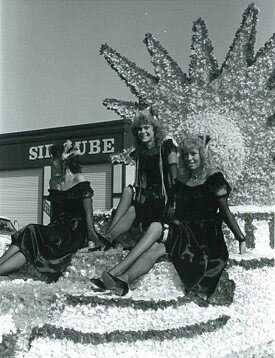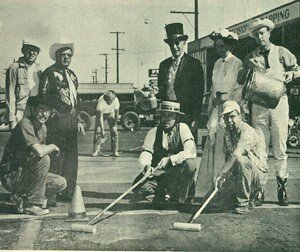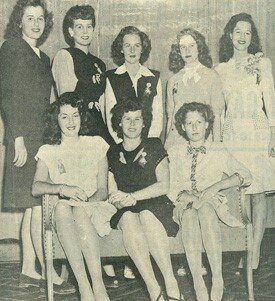History of Taft and Oildorado
Taft was incorporated as a city in 1910, but it wasn’t until 20 years later that the community decided a celebration was in order.
The festivities included a parade that attracted 200 entries and a crowd estimated at 20,000 people. There was a banquet, tug-of-war, fireworks, nail-driving contest, and a water fight staged by the fire department. A civic luncheon was held, which would become a staple of all future celebrations.
The first three events weren’t known as Oildorado. That moniker came along in 1946 (World War II sidetracked the 1945 event) when the Chamber of Commerce decided to form a permanent organization to plan and oversee all future celebrations. It was called Taft Oildorado, Inc.
Planners thought it would be a good idea to make Oildorado an annual event, but the 1947 party proved to be too much for organizers so they decided to go back to holding celebrations every five years with the next one scheduled for 1950.
Over the years new traditions were established:
Queen pageant (1935), Whiskerino contest coupled with a sheriff and posse to enforce the facial hair edict (1940), old-timers registration and the wooden nickel gang (1950).
Oilfield skills contests such as wire line splicing (1950), well-pulling (1965), and backhoe and welding (1980), and pipefitting and crane operation (2005).
Dedications such as the Buena Vista Pumping Plant that is one of the cogs in the California Aqueduct system (1970), Taft Highway Elk Hills crossing (also 1970), Taft College Sports Center and West Kern Water District office (1980), historical plaque at the site of the Gardner Field Army Air Corps World War II training field (1995) and Oil Workers Monument (2010).
State officials like State Sen. Samuel Shortridge (1930), Gov. Frank Merriam (1935), Lt. Gov. Goodwin Knight (1950), and State Water Resources Director William E. Warne (1965).
Picture shows at the Fox Theater such as the 1913 Langford-Lester boxing match (1990) and “Boom Town” (2000) starring Clark Gable, Spencer Tracy and Claudette Colbert, filmed partly in the Maricopa area.
There were some truly unique events Too:
Guinness Book of Records 464-foot long sandwich created by local restaurateur Leonard Gentieu (1975),
Painted portions of Center Street gold (1960, the 50th anniversary),
Arm wrestling championships and Civil war encampment (1995)
Guinness Book of Records Domino’s Pizza, local restauranteur Bob & Tina Leikam
Featured events on the “Games People Play” television program (1980) and on Huell Howser’s program on PBS (1995 and 2000)
Oildorado Grand Parade Entry, 2015 - Twisselman Ranch
Watch this great video that highlights the history of Oildorado from 1930 to 2015!





















